DAY 1
We set off on a short 9-day trip through neighboring areas of southern France and Spain, aiming to fill in some gaps and missed spots from previous trips. Time was short, places to visit were plenty, so the pace was even more intense than usual, which started to bother me, but this time, there was nothing to be done, as, slightly altering a well-known Latin saying, “life is short, and art is infinite.”
Upon landing in Barcelona, we headed into the city foe a short visit. We drove through Sarria-Sant Gervasi, the wealthiest district in the city. This is a completely different side of Barcelona, less glamorous, more cozy, yet still featuring some magnificent examples of Art Nouveau, the most interesting of which is the College of St. Teresa designed by Gaudí. Despite the complicated conditions (a limited budget, the client’s request for moderation in style, and working on an already started building – Gaudí was reassigned the project when the first floor was already completed), in years 1889-1890 the architect managed to build a beautiful, harmonious, and elegant structure. Unfortunately, it can only be admired from behind a fence.
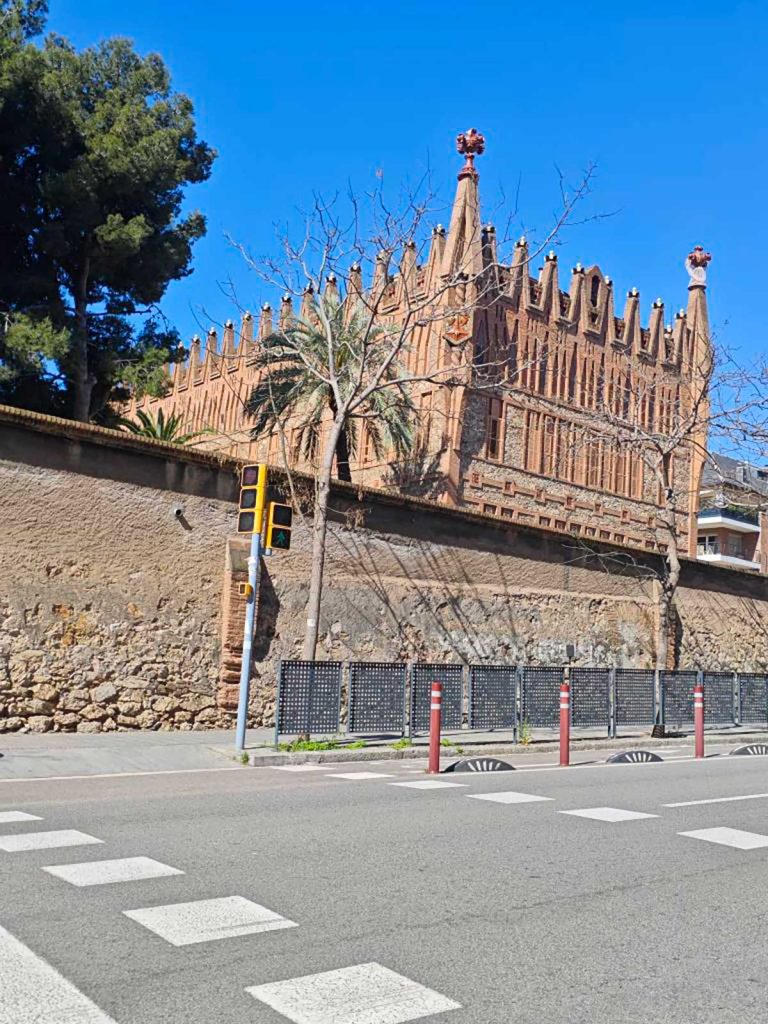
From the college, we headed to the hill Tibidabo, towering over Barcelona. We put “Tibidabo” into Maps, and the program took us on a long detour, taking us to the hill from the far side. We should have probably put “Church of the Sacred Heart,” Sagrat Cor, into Maps.
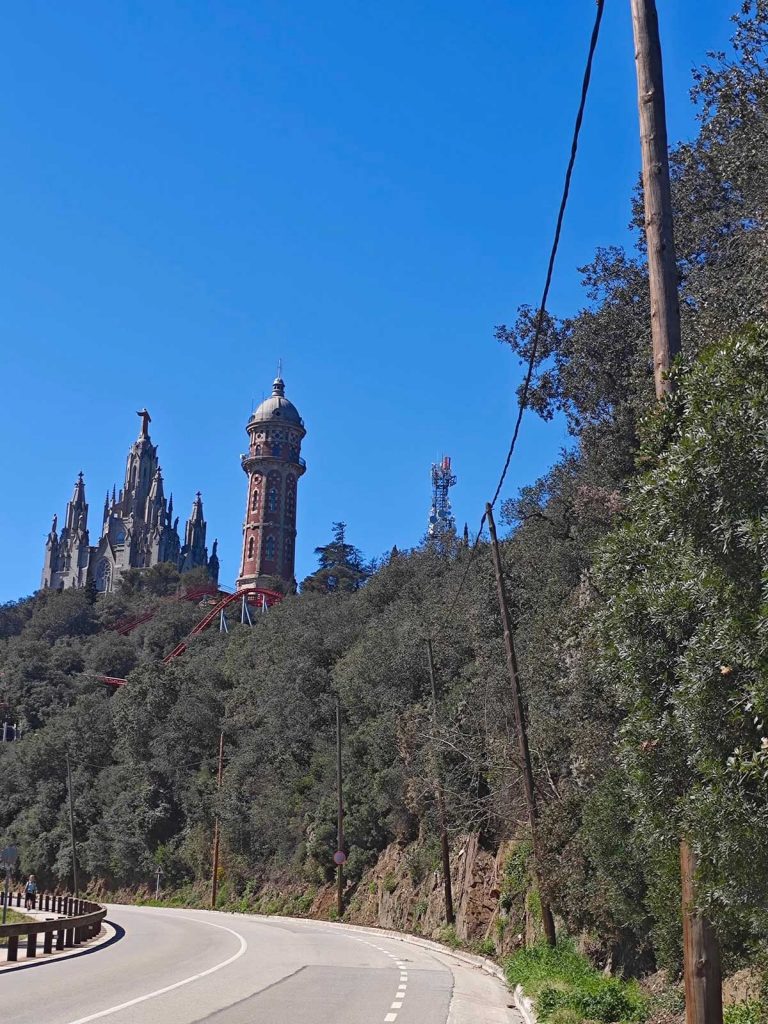
This church, built from 1902 to 1961, is a complex of two churches stacked on top of each other, with the lower one resembling the Sagrada Familia in both color and execution style, while the upper one is a rather uninspiring gray (both literally and figuratively) Neo-Gothic structure. We only entered the lower one, which is filled with mosaic panels reminiscent of the Church of the Passion of Christ in Jerusalem.
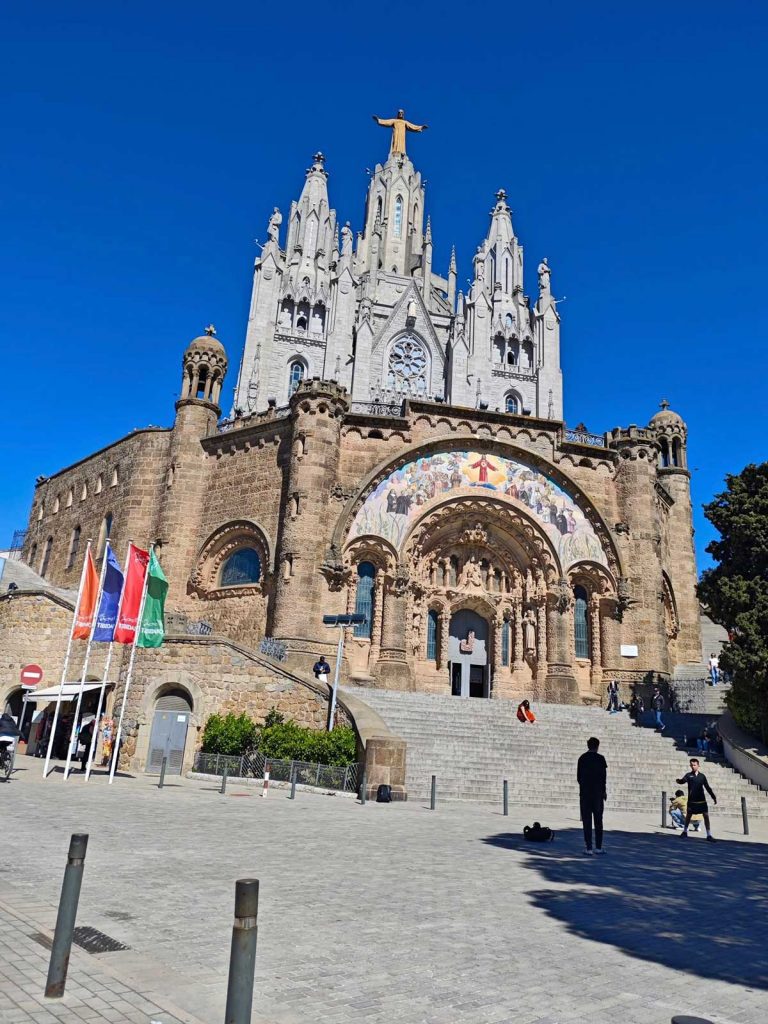
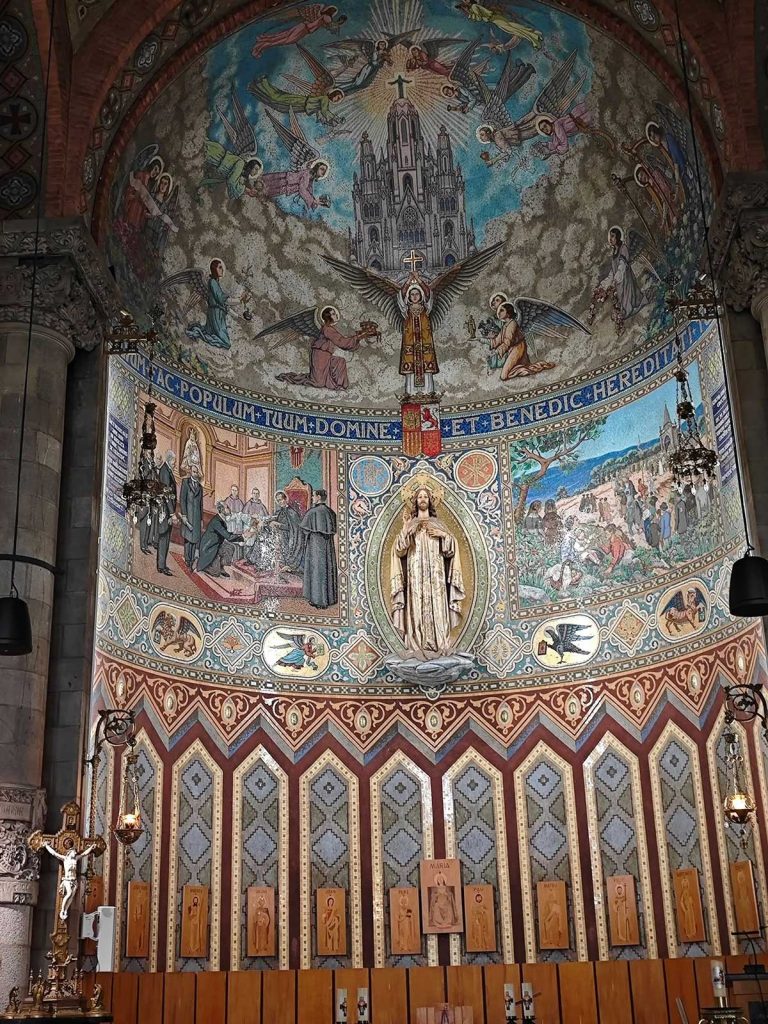
We descended from Tibidabo via the “correct” street lined with many Art Nouveau villas. I won’t even mention the views of the city – it goes without saying. The best way to get to Tibidabo is still by funicular, I think.
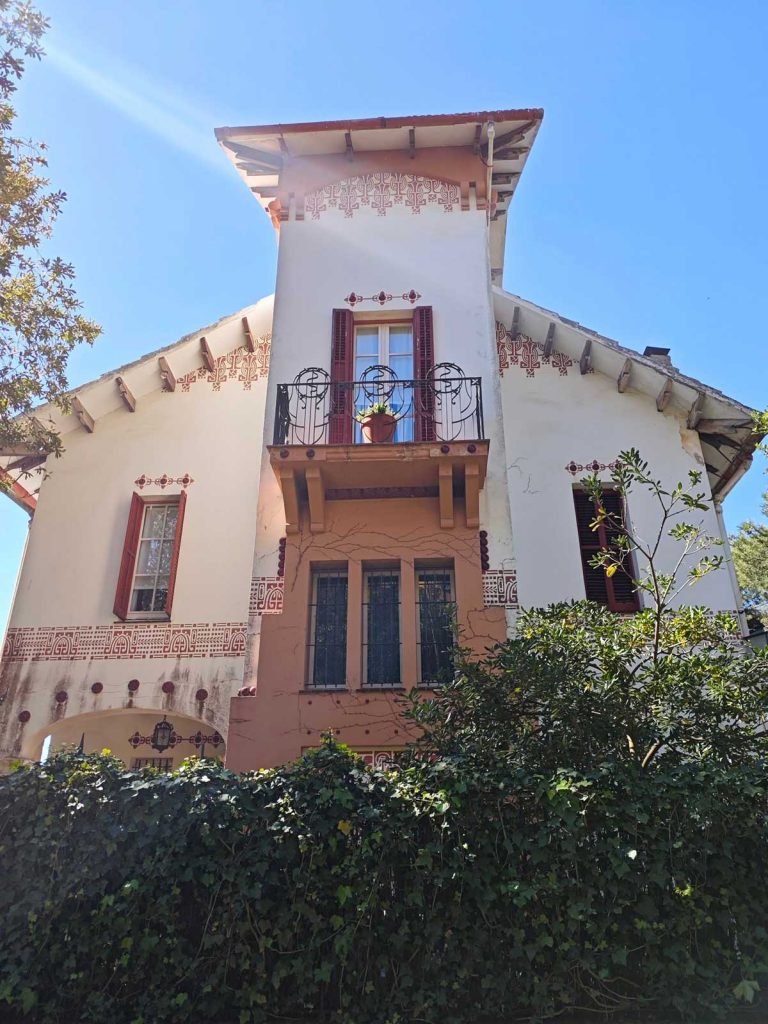
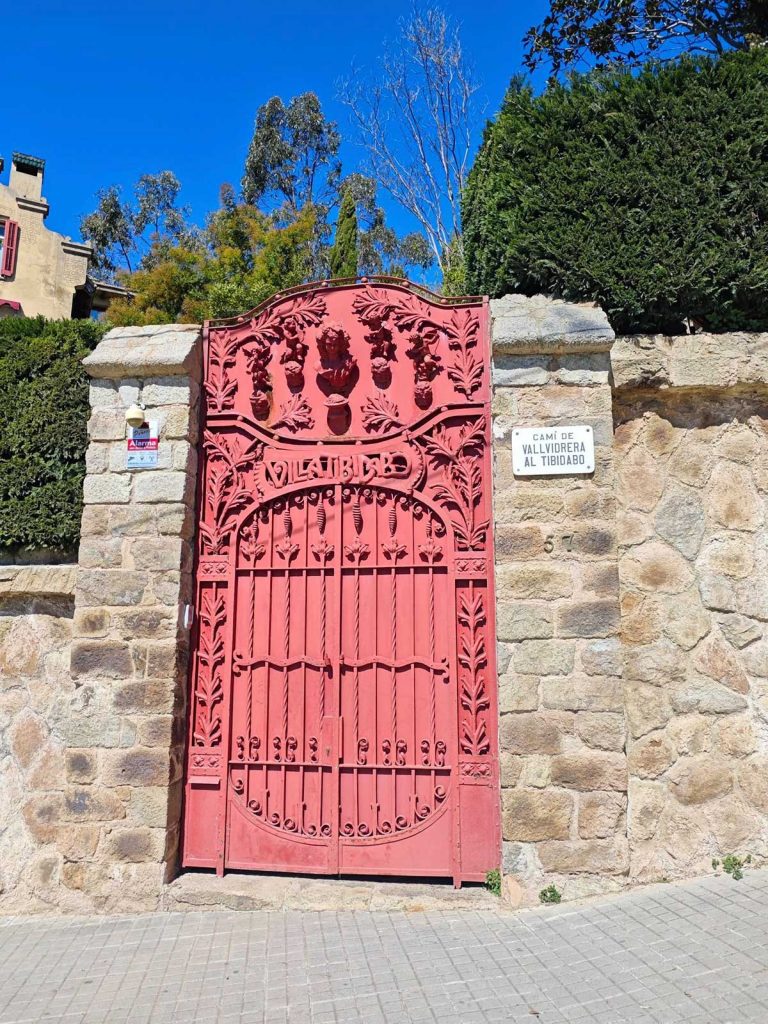
Art Nouveau villas on Tibidabo
From Tibidabo, we descended to the Figueres house, or the Bellesguard Tower, once again by Gaudí. This is one of Gaudí’s most interesting works (1900-1909) that has remained underappreciated due to its distance from the city center, as evidenced by the low entrance fee (only 12 euros). Unfortunately, we couldn’t go in (probably due to it being Monday), but from the yard of the nearby university, the building can be admired in all its glory.
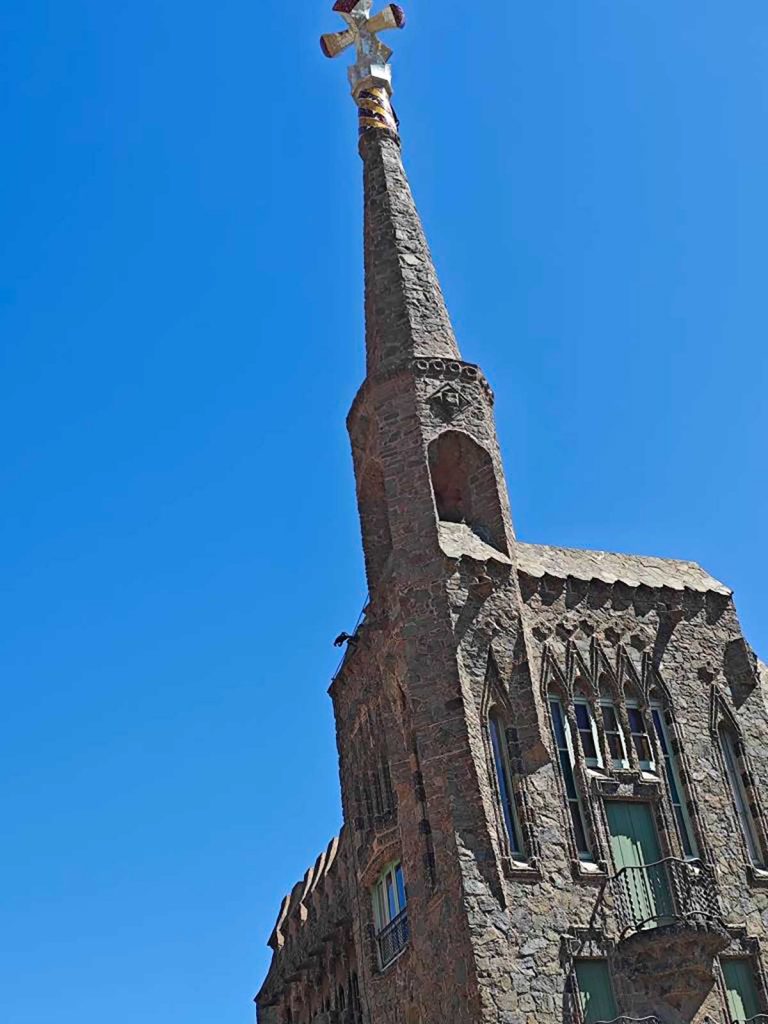
Having concluded my, apparently, last visit to Barcelona, we set off for a two-hour drive to the Sant Pere de Rodes Monastery, dating back to the 10th-11th centuries. The monastery towers over the jagged, bay-laden coastline of the Costa Brava, not far from Port Lligat with a Salvador Dalí’s house. Unfortunately, we couldn’t see the cloister with its Romanesque capitals (people who had seen them say there are only a few, but interesting), but the views from the hilltop site of monastery, and itse imposing towers made the trip worthwhile.
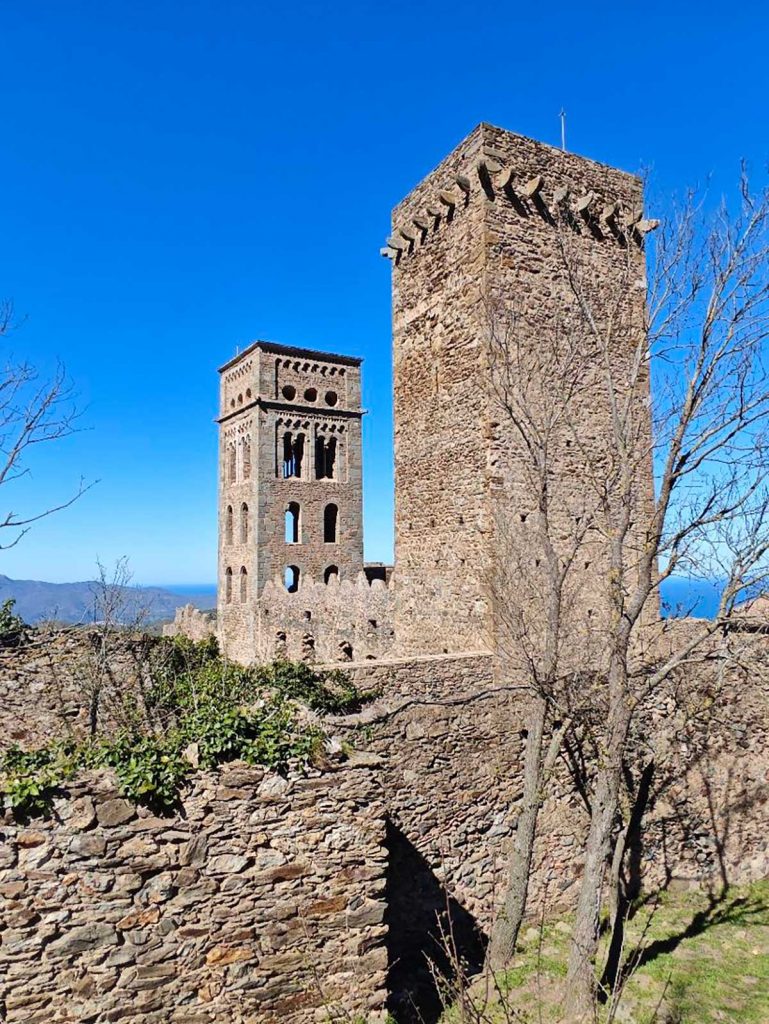
Unlike most Romanesque bell towers, which are simple and austere, but in my opinion beautiful, this bell tower is more decorated. This is due to the influence of Lombard style, which added some liveliness to the ascetic Romanesque (think of Lucca). Nearby is another tower, a blind one, resembling a keep. I later read that this is a defensive tower, which is quite unusual for a monastery.
From Sant Pere de Rodes, the last stretch of today’s long journey (244 km, 5.5 hours of driving after a night flight) was a winding road, up and down along the coast to our first French town, where we will spend the night, Banyuls-sur-Mer. Before and after the monastery, we had views of the snow-covered Pyrenees, probably all the way to Pau.
Before heading to our accommodation, we stopped at the Maillol House Museum, located 4 km from the town. We were a bit late, and the museum closed at five (from May it’s open until six), but by sneaking onto the grounds, we saw its main attraction – the “La Méditerranée”, one of Maiol’s best and most famous works, standing in front of the house.



We ended the day with a walk along the town’s promenade, devoid of the usual summer tourist crowds, saw two out of the five sculptures by Maillol placed along the promenade (didn’t have the energy left for the rest), and had a wonderful (and inexpensive) dinner, where everything was just delicious except for the coffee. We had a pureed root vegetable soup, which the Arabic spice ras el-hanout made incredibly tasty (my companion also had some very tasty fish), and for dessert, the usual rice pudding and chocolate crème brûlée turned into refined dishes with the help of some added ingredients (my chocolate was sprinkled with black olives). Yes, and I have got another confirmation that beer is not a French specialty. Neither is coffee, strange as it is.
DAY 2
In the morning, we went to the Banyuls promenade to have a look at and take pictures of the other Maiol’s sculptures. By the way, the model for most of them was the young Dina Aynbinder from Bessarabia, known to the art world under the name Dina Verni. I recommend reading about her. Also, a small addition to yesterday’s culinary excursion: the soup I mentioned is called velouté de légumes, and the restaurant is Jarden de Saint Sebastien.
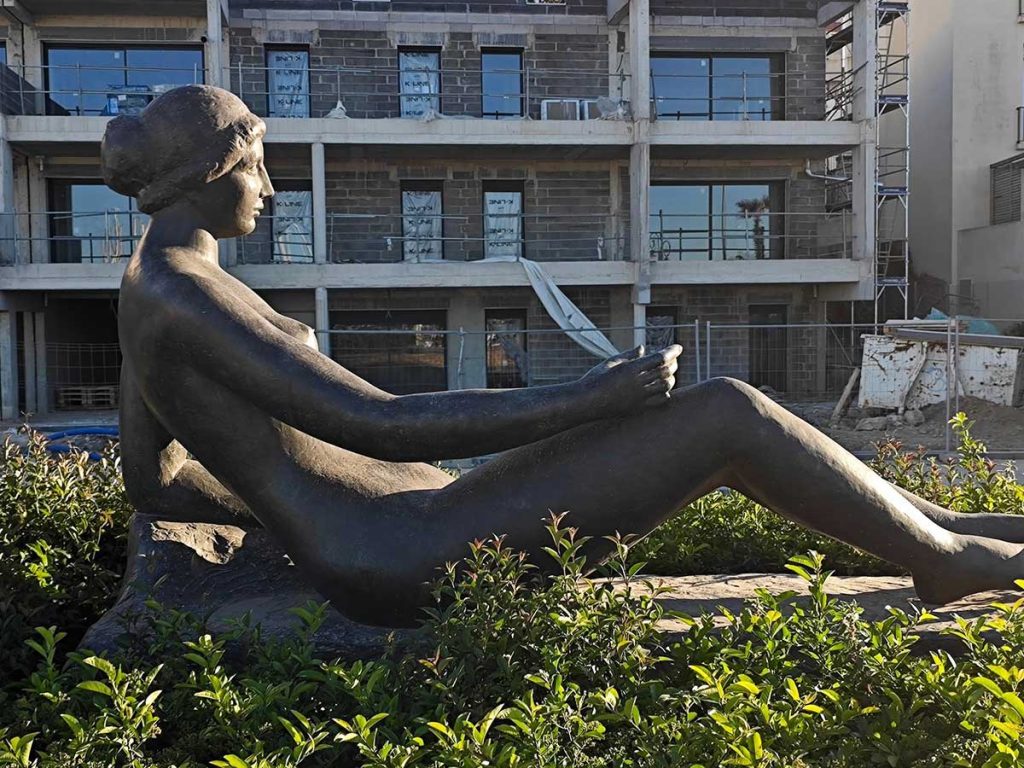
The first stop of the day was in Collioure. The enormous Royal Castle, perched on a high rock, and the beautiful bay make this town very attractive. No wonder that now, when Banyuls is still almost empty, the season is already picking up here.

After that, we headed to Elne, where we visited the Romanesque cloister of the local cathedral in the upper town. There were many sculptures there in average state of preservation; some very good, but the cloisters of Eastern Spain left such an impression on me that everything else seemed less interesting than it perhaps deserves.
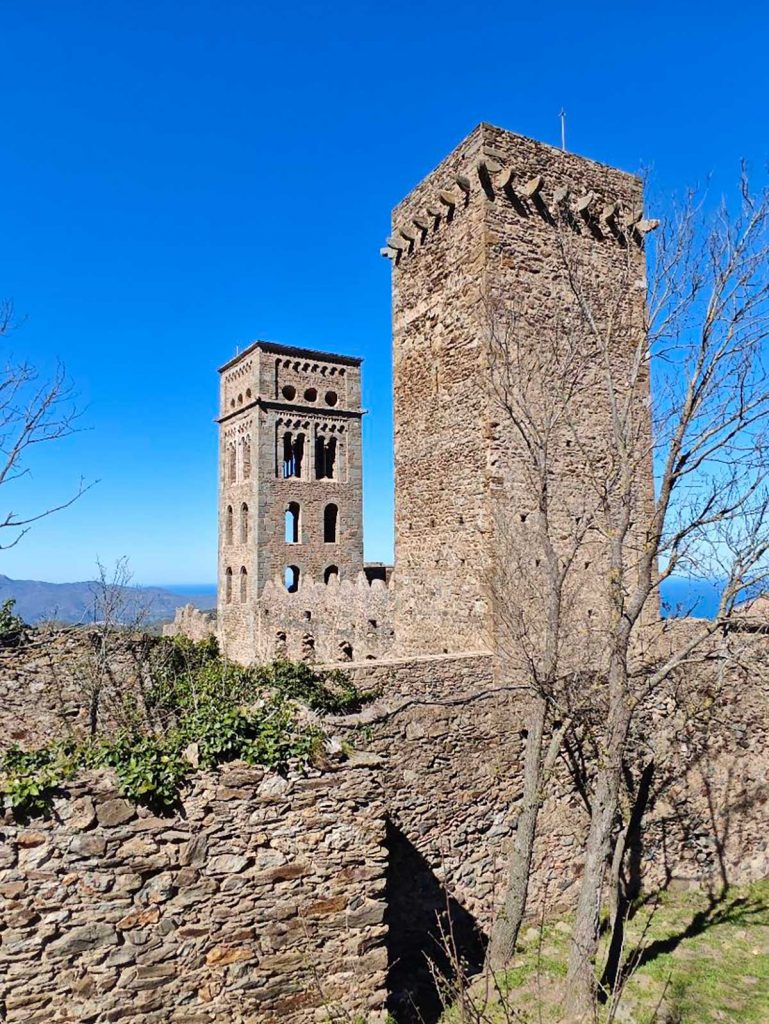
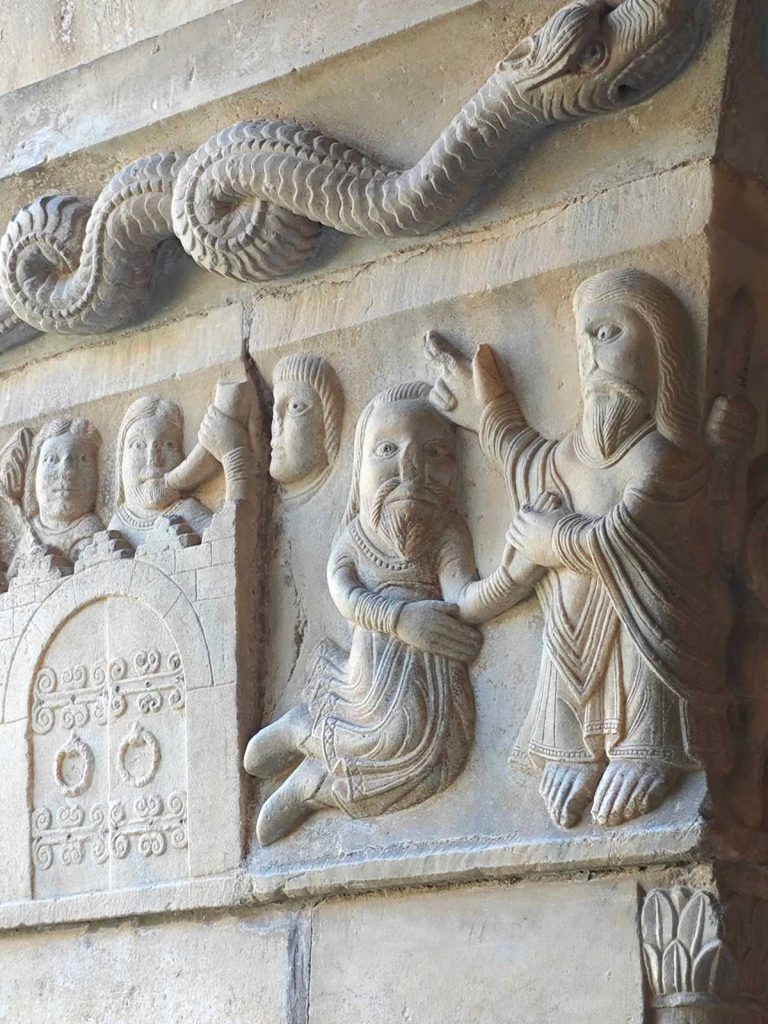
Elne
Leaving the coast behind, we headed into the mountains and went to Château de Peyrepertuse, which rises on a limestone plateau 800 meters above sea level. The climb to this castle takes about 40 minutes. The climb is not difficult, and the views are breathtaking.
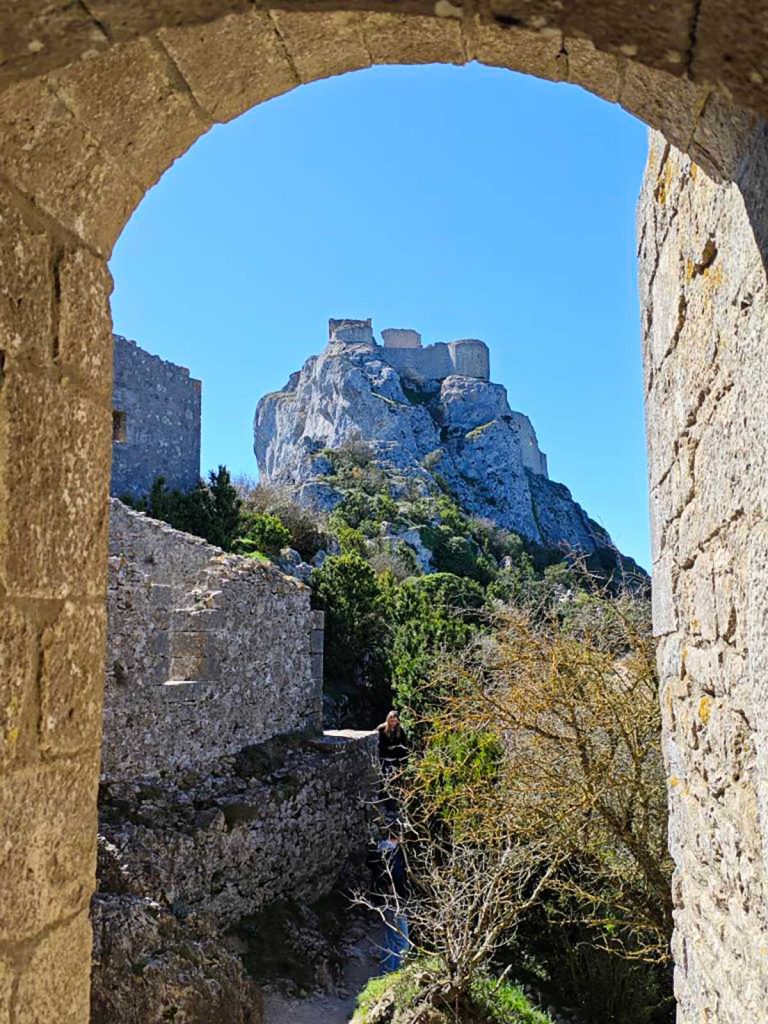
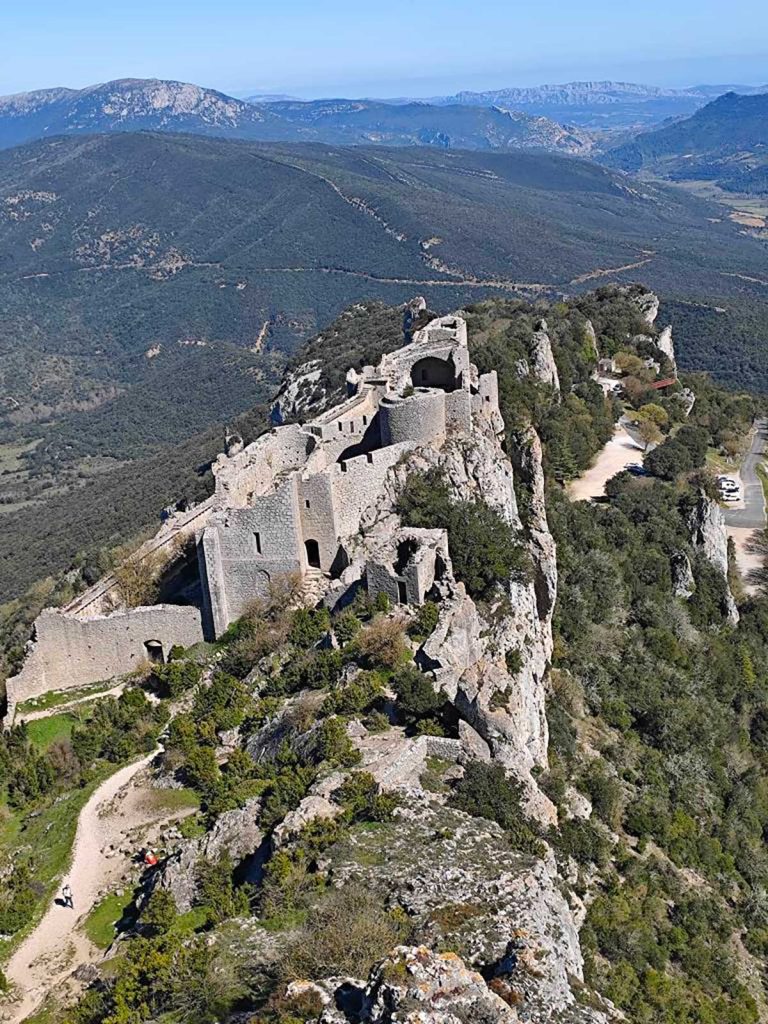
Château de Peyrepertuse
At the other end of the valley stands the Queribus Castle, a small castle crowning a solitary rocky peak. We drove as far as we could, admired the view, but didn’t go to the castle as we were short of time.
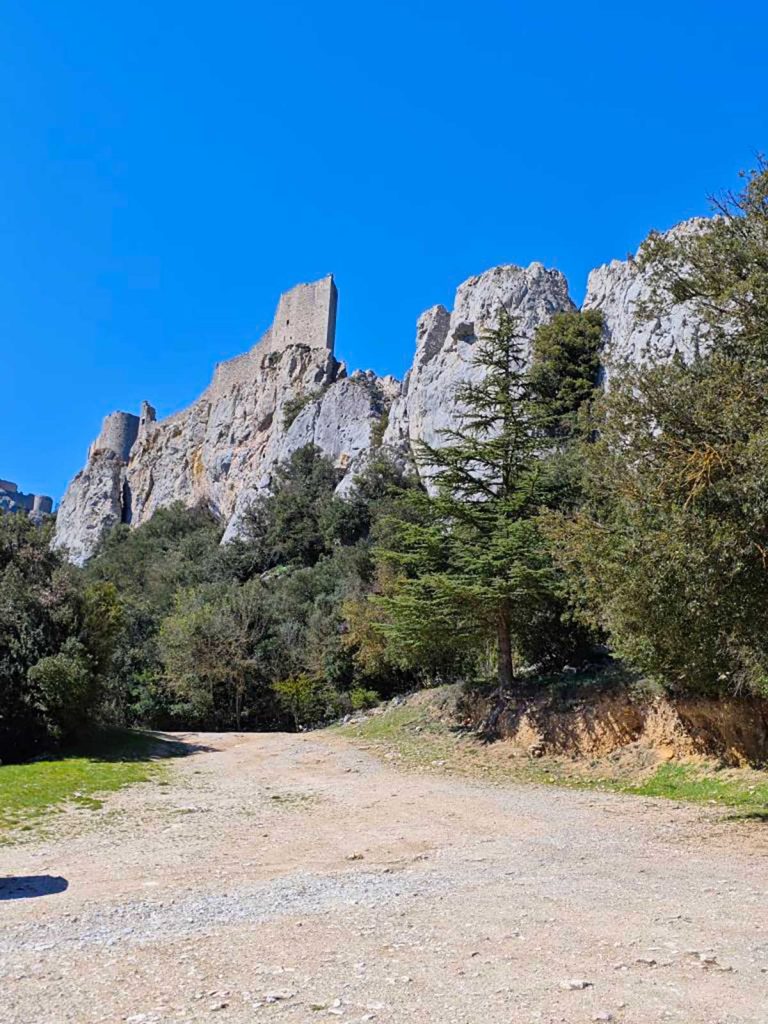
The day ended with a visit to a massive complex in Narbonne, which includes an unfinished Gothic cathedral from the late 12th – early 13th century and the episcopal palace.

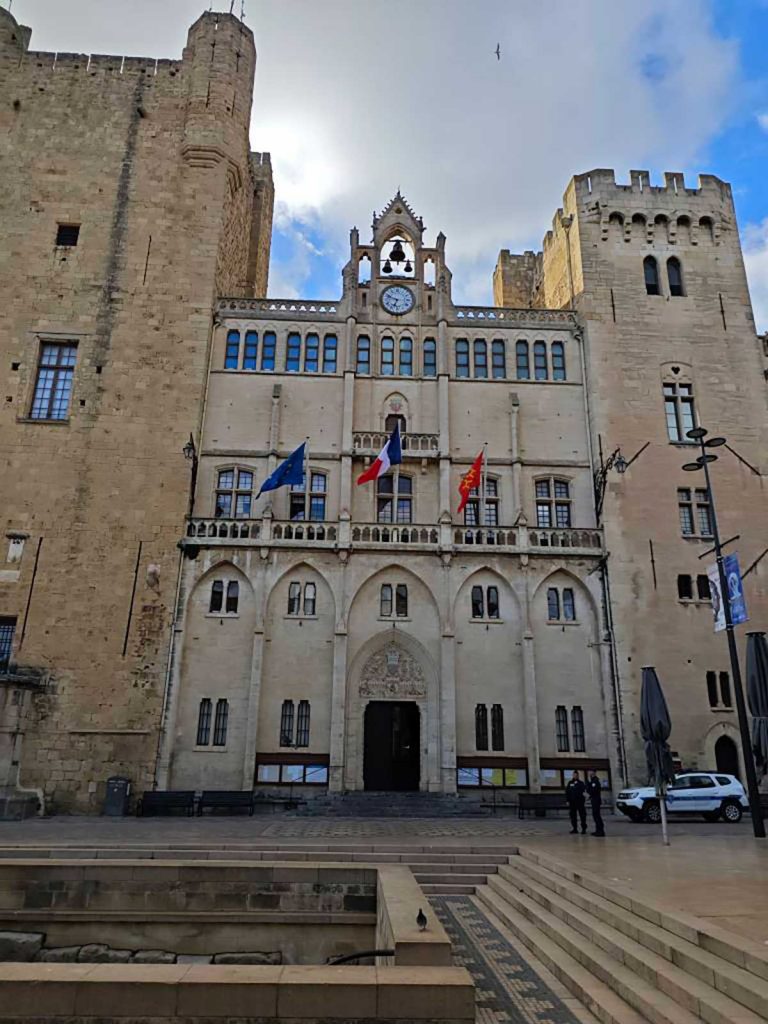
DAY 3
The third day was planned not so much incorrectly, but rather with hope for a miracle. The miracle did not happen, and the program for this day went upside down.
Here’s how it went. In the morning, we headed to Orgues d’Ill-sur-Têt, natural columns scattered across a rather large area. We had time before the reserve opened (at 9:30), so we went up to the viewpoint to look at them from above, though from a distance. Then we decided to limit ourselves to just that: we didn’t want to wander in the wind (it got much colder), and we still hoped that this would help us accomplish the clearly impossible program for the day.

Next, we drove to the Saint-Michel-de-Cuxa Monastery, or San-Miguel-de-Cuxa in Catalan, with the largest pre-Romanesque church in France, consecrated in 974. Half of the capitals of the cloister of this church are in the Cloister Museum in New York, but what remains is more than enough to justify a visit to this place. The sculptures on the capitals are symbolic in nature, not narrative, and some show the influence of the East (at that time!).
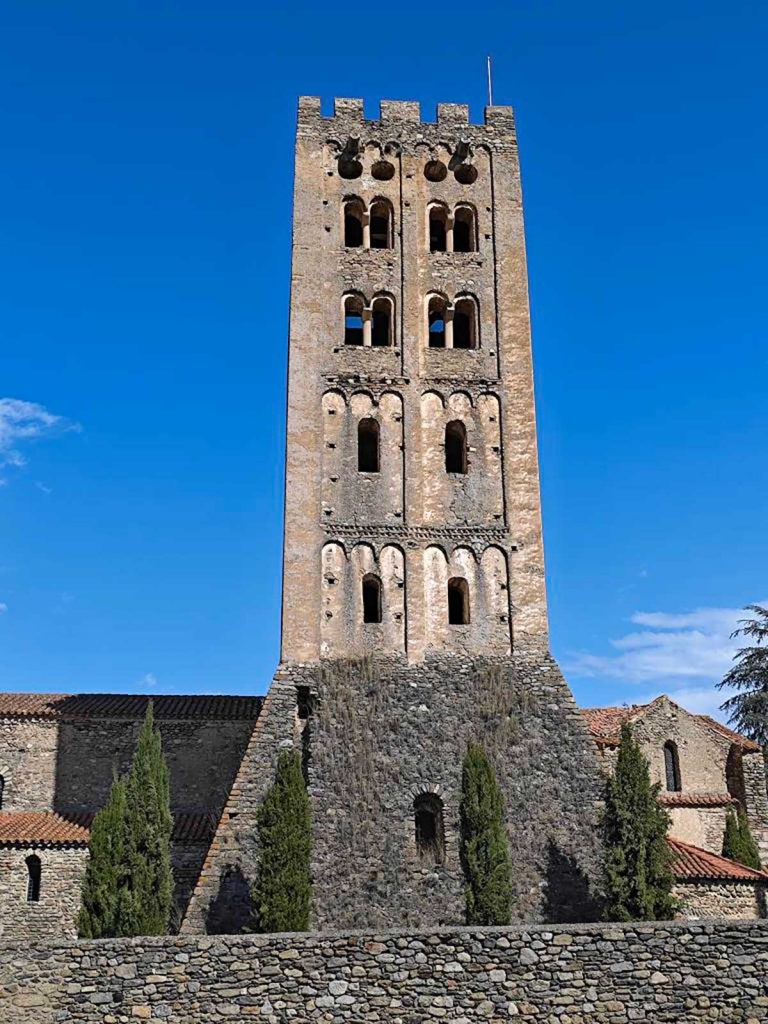
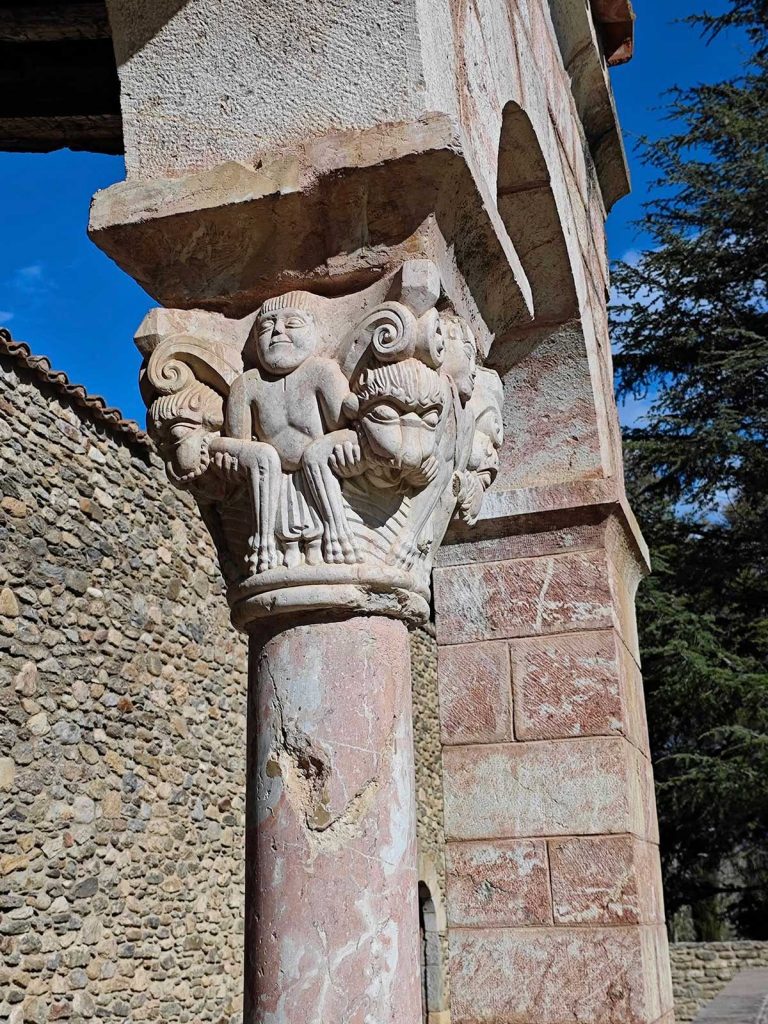

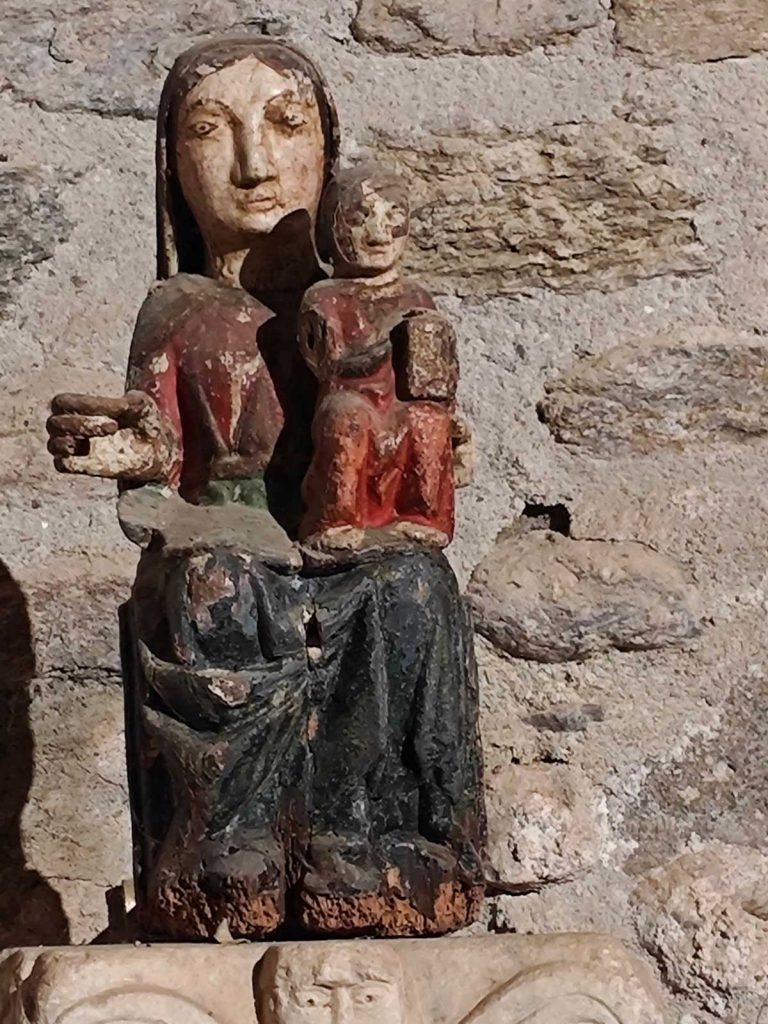
Inside the church one can see, omong others, a beautiful sculpture of the Madonna from the 13th century and a sculptural group “Christ with the Disciples,” actually, “The Agony in the Garden” with sleeping disciples and an angel holding the cup.

Next, passing through a small town of Corneilla de Conflent, we “had to” stop at yet another of the countless French Romanesque churches, which amazed us with its windows in the apse, decorated outside with seven (!) different arches and columns with sculptural capitals. Never have seen such a thing before!
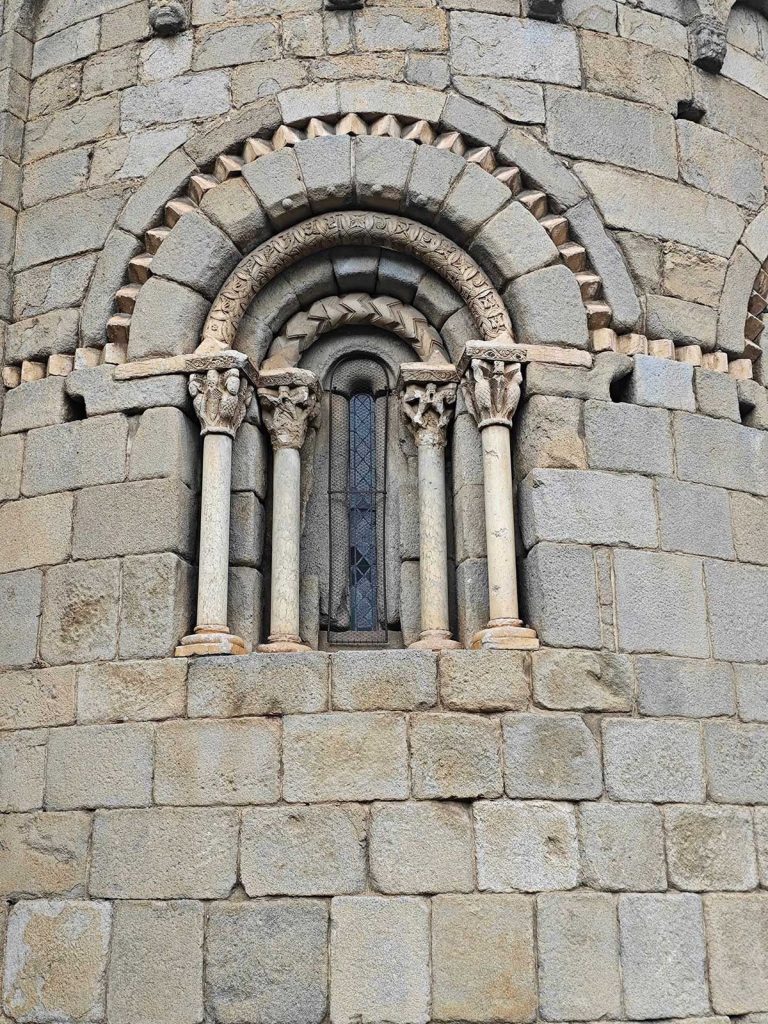
Continuing further along the foothills of the Pyrenees, we suddenly saw massive fortress-like walls to the right of the road, and behind them, a tiny town, Villefranche-de-Conflent, with just one and a half streets. It is one of the 50 most visited towns in France. Here, you can take a tour within the city walls and climb to the fort of Libéria, which towers over the town, built, of course, by the ubiquitous Vauban. The fort and powerful walls owe their existence to the strategic position of the town near the border with Spain: these territories were then recently ceded to the French after the Treaty of the Pyrenees (1659), and the town became an important French defense against possible Spanish incursions. This is also where the route of the Yellow Train begins, once a means of transport, now a tourist attraction to take the visitors around the surrounding area.

Our next destination was the Saint-Martin-du-Canigou Monastery. Reaching this goal was not easy: the monastery is situated high in the mountains, and you have to walk 1600 meters up a fairly steep road (with a height difference of 300 meters). You can drive, but only with a 4×4 vehicle. The sign at the beginning of the road says it takes 25 to 50 minutes to reach the monastery. I was a little over that, taking 53 minutes to climb, but considering my age, the virus I brought with me to this trip, and my complete lack of training after winter, I think it was okay. The return trip took me 35 minutes.
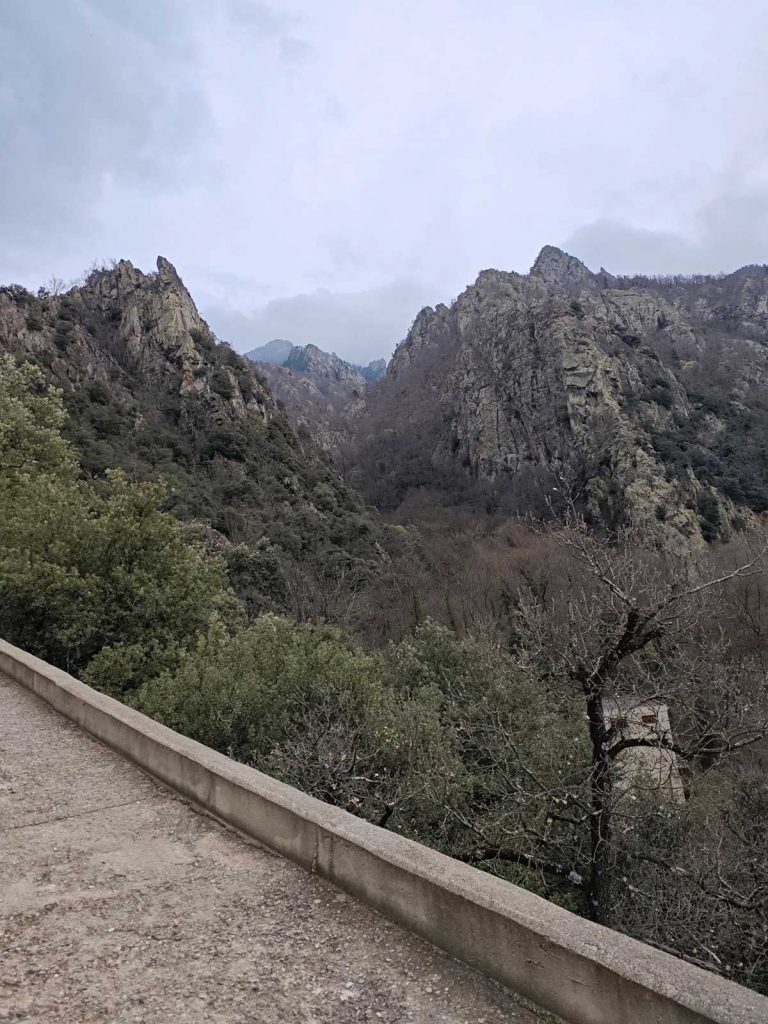
The monastery, which had been in ruins for many centuries, was relatively recently restored (the same story applies to the previous one, Saint-Michel, and the next stop on our journey – the Serrabona Priory). A young monk, who spoke almost no English, gave the tour, but he spoke slowly and clearly, so even with my almost non-existent French, I managed to understand some things. The sculptures on the capitals here are mainly of the same nature as at Saint-Michel: real and mythical animals, most often a lion, symbolizing God, expressive faces, a dancing Salome, and suddenly, a lion with an Assyrian bearded face. Everything was completely different, unlike anything I had seen before. You can also climb another 100 or so meters to a viewpoint with a beautiful view of the monastery, but I didn’t have the energy for such a feat.

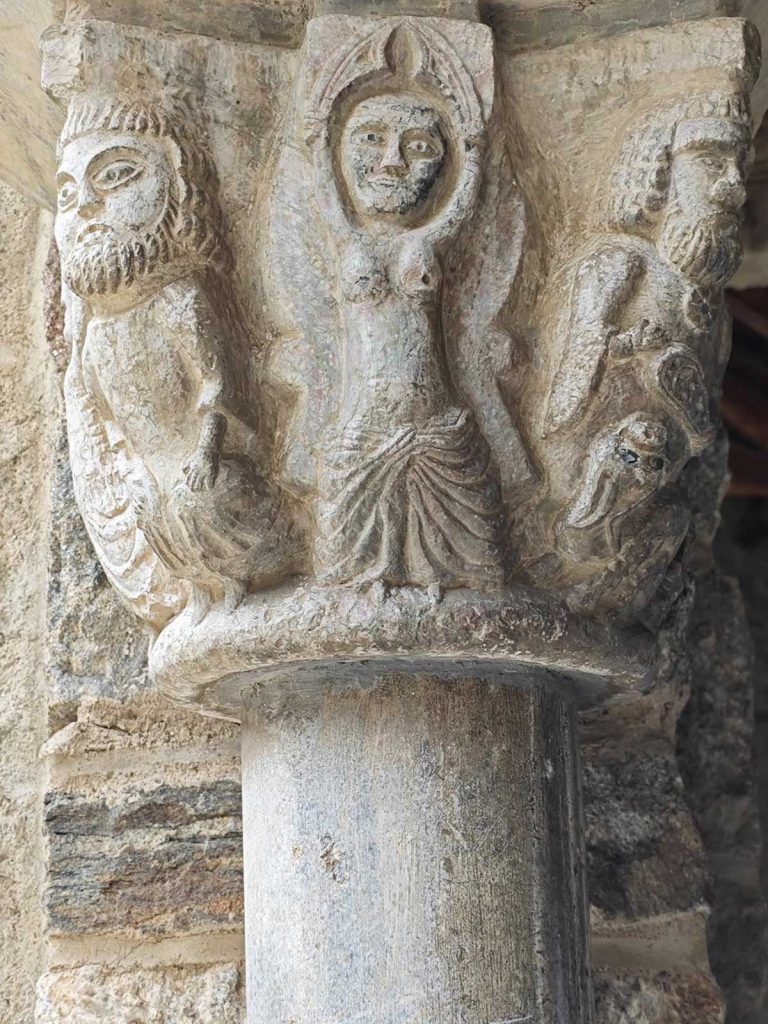
We arrived at the monastery just in time for the last tour, at 16:00, so we had no choice but to head to our place for the night. Waze, which promised to get us there in an hour and a half, misled us, and it took us over two hours, with about half an hour on an unpaved road, which had depressions every twenty or thirty meters. The road kept going up, we passed 1000 meters, the temperature outside dropped to 4°C, then to 2.5°C. We were not far from the snowline, but then the descend began, which finally brought us to our accommodation – a campsite – and 7°C.

